Annoying terror from heaven
The Immersion VORTEX 250 drone collides with a jet of water. This anti-thrust solution was developed by a group of engineers from Robins Air Base
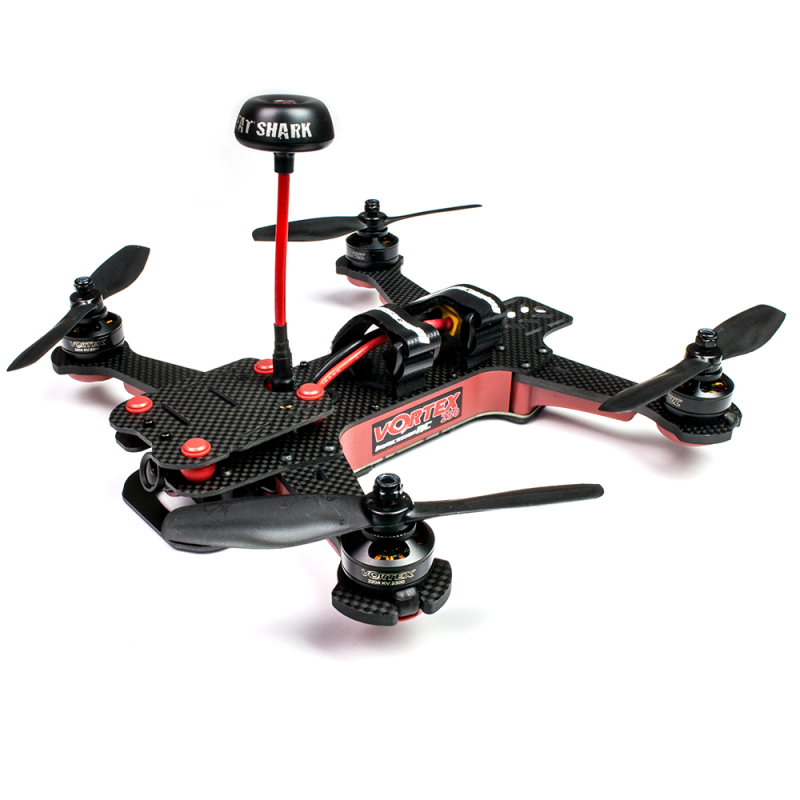
Close view of quadrotor VORTEX 250
Critical tactical and operational exposure of the military to the threat of small drones forces the industry to direct resources to finding solutions that can close this gap in combat capabilities.
Recent incidents, including the use of small enemy unmanned aerial vehicles (UAVs) by terrorist organizations in Syria and Iraq, as well as regular armies in eastern Ukraine, combined with a booming industry for the manufacture of UAVs outside NATO borders, raised serious questions about whether they were prepared, whether the armed forces are organized and equipped in an appropriate manner to successfully combat them in their countries and beyond.
The ability of the self-proclaimed Islamic state (IG, prohibited in the Russian Federation) to deliberately drop explosives from the air means a new challenge for the armed forces participating by definition of the UN in “one of the largest urban battles since World War II”. One of the commanders of the UN unit in Iraq reported that there is evidence that the IS militants had fixed small ammunition to the quadcopter, trying to cause damage to the local army, trying to take Mosul back.
In July, 2017, the US Department of Defense requested additional 20 million dollars from Congress to combat the threat of the use of IG unmanned vehicles. Michael Shields, director of the Organization for Combating Imported Explosives, said that there is “a sense of urgency in equipping the US military with antidroning technologies.”
The limited capabilities of the military in detecting, identifying, tracking and neutralizing small-sized UAVs have contributed to enhancing their tactical and operational vulnerability. The soldiers and their commanders faced a serious problem that research organizations and design bureaus took up, offering practical options for further testing and deployment, which led to the emergence of a number of innovative solutions for detecting, identifying and destroying attacks of this type. However, the development of specific requirements for designers and manufacturers is complicated by the uncertainty of the nature of this threat.
New ways to fight
However, new systems have been developed to deal with it, including a handheld DRONE DEFENDER device that knocks down drones at a distance of 400 meters. A directed energy device from Battelle has already been deployed to the US contingent in Iraq. It disrupts the control of the drone, suppressing it in such a way that not only remote operation is excluded, but also the detonation of ammunition on board, thereby the drone receives minimal damage and does not pose a threat to public safety. The DRONE DEFENDER device uses a non-kinetic principle to protect the airspace from small quadcopters and hexacopters without disturbing the operation of security systems. Easy system with an intuitive interface does not require long training. It instantly disrupts the drone using two methods: disrupting the operation of the remote control or the GPS system.
Battelle DRONE DEFENDER device
The demo demonstrations of "Black Dart" 2016 were attended by 25 government organizations, 1200 people and more than 20 variants of unmanned aviation complexes for the purpose of testing technologies for detection, identification, tracking and neutralization of UAVs. Participants of this event had the opportunity to coordinate the operation of various systems, share information on the latest developments in anti-drone capabilities, evaluate and improve existing systems. The Black Dart scenarios provided a realistic environment for US Navy missile destroyers to escort drones launched from Eglin Air Force Base in Florida. In the initial scenarios, the UAV routes were known to all operators, which made it possible to confirm the settings of all systems and sensors and the actions of the operators. In advanced scenarios, the drone routes were unknown, which increased the realism of the learning process.
UAVs were controlled from inflatable boats, which were two nautical miles from the ships; in marine conditions, the operation of sensors and tracking systems at different distances and altitudes was checked. The Black Dart event was planned, coordinated and monitored by the Joint Integrated Air Defense and Missile Defense Organization (JIAMDO) air defense and missile defense organization.
Among the solutions shown during the “Black Dart” event, it is worth noting the Mobile Application for UAS Identification (MAUI) mobile application for identifying the UAV developed by Northrop Grumman. Chuck Johnson, head of the Northrop Grumman Mission Systems division, said that “The proliferation of the threat of a UAV is a matter of increasing concern. In modern, very complex combat scenarios that we are witnessing, users need the necessary innovative and flexible features, such as over-the-horizon detection and non-kinetic defeat, which can be quickly integrated into already deployed systems. ”
MAUI is a mobile acoustic application that runs on Android cell phones. It uses the phone's microphone to detect drones belonging to the 1 Group, that is, weighing less than 9 kg, flying at altitudes below 360 meters and slower than 100 nodes (183 km / h). Software solution MAUI, loaded into commercial mobile devices, provides trans-horizon detection and identification of UAVs in noisy environments.
The DRAKE radio frequency system (Drone Restricted Access Using Known EW) also developed by Northrop Grumman operates electronically on the 1 Group drones. Using the example of DRAKE, the feasibility of reorienting the proven technology to combat improvised explosive devices (IEDs) for anti-thrust tasks while protecting their communication channels is demonstrated.
DJI's PHANTOM 3 quadcopter with 300 grams carrying capacity is easily available on the Internet for a few hundred dollars.
In marine conditions
Anti-dron exercises are also included in the American combat training program. fleet COMPTUEX (Composite Training Unit Exercises), which each carrier strike group (AOG) must pass before deploying. “We have various systems that can combat UAVs, and it’s important that we increase our professionalism in this innovative and high-tech field,” said Admiral Jess Wilson, commander of AUG 10, which includes the Dwight Eisenhower aircraft carrier. This recognition, expressed at such a high level during the implementation of the AUG of the COMPTUEX program, is the first of its kind. “With the development of drone technology that can be used to attack or gather information about surface ships, anti-droning tasks are becoming especially important for protecting the fleet,” said Patrick Dunn of the HSC 7 helicopter squadron.
The drone combat drills, which resulted in a drone shot down, included various means. “We worked as a light link, using the MH-60R SEAHAWK helicopter from the HSM-74 to search, track, identify and then direct the MH-60S from the HSC-7 squadron to intercept the target,” said Dann. The helicopter crew shooter shot down the drone with a 12,7-mm machine gun.
The purpose of the exercise was to use the experience of the "Black Dart" and apply it in the work of AUG, which includes aircraft carriers, cruisers, destroyers and almost 80 aircraft. In a real combat situation, the aviation wing of the aircraft carrier, together with the cruisers and destroyers, was able to track, identify and then conduct a kinetic attack on this BLAH. This development of military operations proved to be successful not only by using the results of previous tests and experiments, but also by checking the correctness of tactical techniques and methods. After working out these techniques and methods that were developed taking into account the Black Dart experience, the shock team confirmed that it can easily deal with the threat of a UAV.
The US fleet is also in search of short-term technological solutions to combat small remote-controlled aircraft that threaten its ships, bases and other objects. According to the representative of the Center for the development of surface weapons of the Navy in Dahlgren. Researchers are exploring “ready-to-deploy, tested anti-thrust capabilities that could protect fleet and coast guard facilities in the continental US.”
As part of the program to combat drones, kinetic and non-kinetic options are being evaluated to neutralize enemy or suspicious vehicles, classified by the US Department of Defense to the 1 and 2 Groups, which include platforms weighing up to 24,9 kg. According to the request for information from December 2017 of the year, fleet security forces need "effective, reliable, weather-resistant, easy to operate, with simple maintenance anti-thrust systems for territorial and point protection."
The impact drone with attached net is part of an anti-thrust system developed by engineers from the Wright-Patterson Air Base
Other anti-thrust systems
During the Air Force Research Laboratory Commanders Challenge 2017 competition, held at the National Security Center in Nevada, the assault drone with an attached net, which is part of the anti-dron system developed by a group of engineers from the Wright-Patterson airbase, intercepted the network hexadron DJI S1000 (photo below) . Groups of participants were given six months to develop a complete anti-thrust system capable of helping to protect military bases. To detect the UAVs in this system, in addition to the impact drone, a camera and a laser rangefinder are used.
In the Air Force Research Laboratory Commanders Challenge competition, another anti-thrust system was shown - the TART S6 drone, equipped with a paintball gun, which shoots projectiles with nets around a suspicious drone. Developed by a group of engineers from the Hansky air base, this system uses radar, jammers and the TART S6 drone itself.
Drone TART S6 with a fixed paintball gun (left), shooting nets, pursuing a PHANTOM 4 BLA
The radar and signal jamming device, integrated into another anti-thrust system created by a group of developers from the Kirtland airbase, tracked the PHANTOM 4 drone, getting a real opportunity to neutralize it by jamming and catching the network. The gun (setter) NET GUN X1, the ejecting network, is an inexpensive, easy-to-use means of active deterrence that allows the armed forces or law enforcement officers to capture drones at a distance of up to 15 meters.
A lightweight, small and compact network that is certified for networks of two different types can be deployed without any problems in any unit to combat unwanted drones. Capturing a drone allows you to quickly take control of the situation and then transfer it to forensic experts who can determine its operator.
A group from the Robins air base demonstrated its system by “firing” the VORTEX 250 drone with a jet of water. This is a multi-level system that uses a radar and a camera for detection and identification. It also includes a search and attack drone to intercept and water gun to shoot down suspicious UAVs.
Anti-drop solutions using networks are gaining more and more trust. To assess the level of technology, the United States Department of Defense Threat Reduction Agency sponsored the C-UAS Hard Kill Challenge counter-challenge competition, which was held in February 2017 at the White Sands test site. Among the systems demonstrated was a SKYWALL 100 handheld set made by the British company OpenWorks Engineering with an estimated range of 100 meters. The portable launcher shoots the net, which covers the drone and then gently lowers it with a parachute to the ground.
The system was tested on several aircraft and helicopter-type drones in an environment close to real. Several drones were caught in the Skywall network and safely landed on the ground using the SP40 parachute. The captured drones then returned to the testing team to re-enter the competition. OpenWorks is developing a longer-range SKYWALL 300 anti-thrust system, as well as a SP40-ER projectile that can catch suspicious drones at a distance of up to one kilometer.
Anti-thrust SKYWALL 100 system
The market for anti-thrust systems has also attracted a lot of attention from large American and European companies, including Rheimetall and Airbus. Rheinmetall Defense Electronics demonstrated a ship-based anti-thrust laser system, a turret with four high-energy lasers. According to reports, a laser machine operating on the principle of a Gatling machine gun can knock down a drone at a distance of 500 meters; four 20-kW laser, operating simultaneously, generate a beam of power 80 kW and can bring down the drone and detonate any weapons on board.
Hensoldt, a division of Airbus DS Electronics and Border Security, added a portable jamming system to its family of anti-throne systems that detects the unlawful intrusion of small drones over critical areas and performs electronic suppression, minimizing the risk of indirect damage. The newest addition to the XPELLER modular anti-thrust system's product line is the lightweight jamming system developed by its South African division of GEW Technologies.
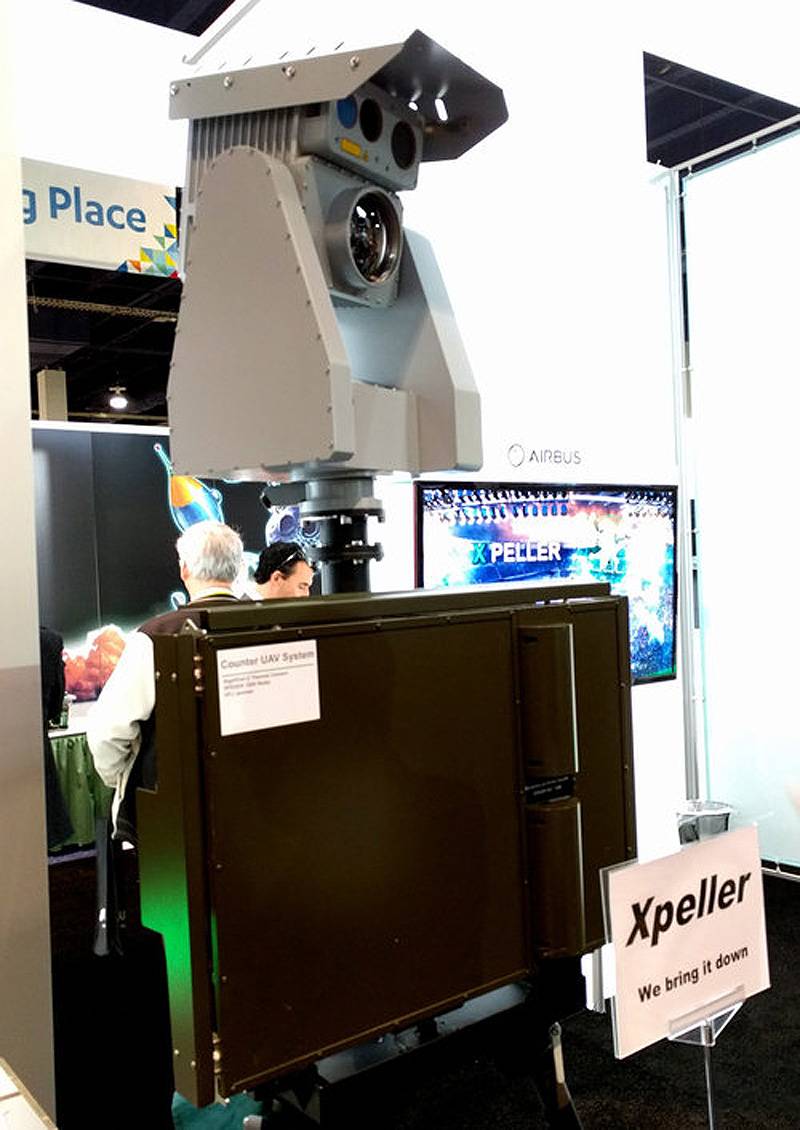
XPELLER anti-thrust system
Airbus has also signed a cooperation agreement with the American Dedrone UAV countermeasure system, which combines sensory data from various sources with the latest fusion technology analysis data, signals and jamming.
One of the best solutions for ensuring low-altitude security is the DroneTracker system from Dedrone. It consists of a multisensor unit (stationary or portable), a radio frequency sensor (as a separate module), as well as updated software for signal processing. The technologies integrated into it allow us to determine the exact type of drone, the flight route, its owner, where the operator is and, in some cases, what he sees.
Portable DroneTracker System Option
With the proliferation of small helicopter-type drones that can be easily bought on the Internet, the era of flying IEDs becomes a reality and protection from them will require considerable effort and resources from both industry and the military.
Related articles: The many threats of improvised explosive devices
On the materials of the sites:
www.nationaldefensemagazine.org
www.immersionrc.com
www.battelle.org
www.northropgrumman.com
www.dronedefence.co.uk
openworksengineering.com
www.defence-and-security.com
www.dedrone.com
www.hydrostudios.com
pinterest.com
www.wikipedia.org
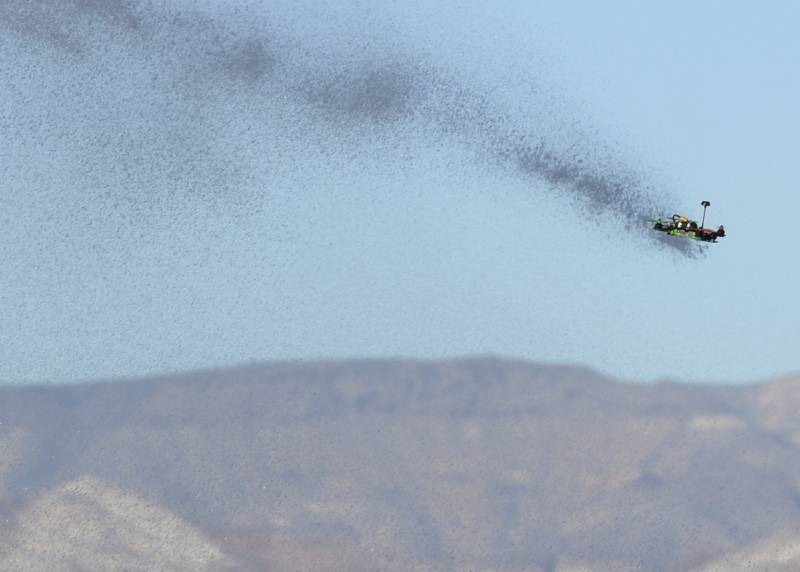
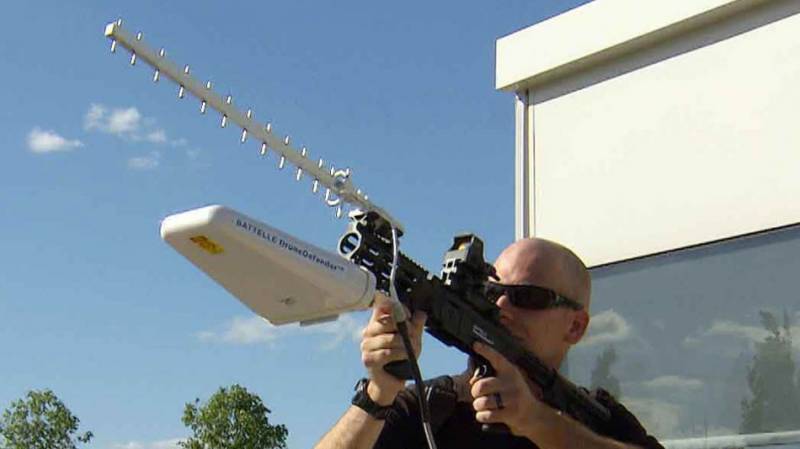
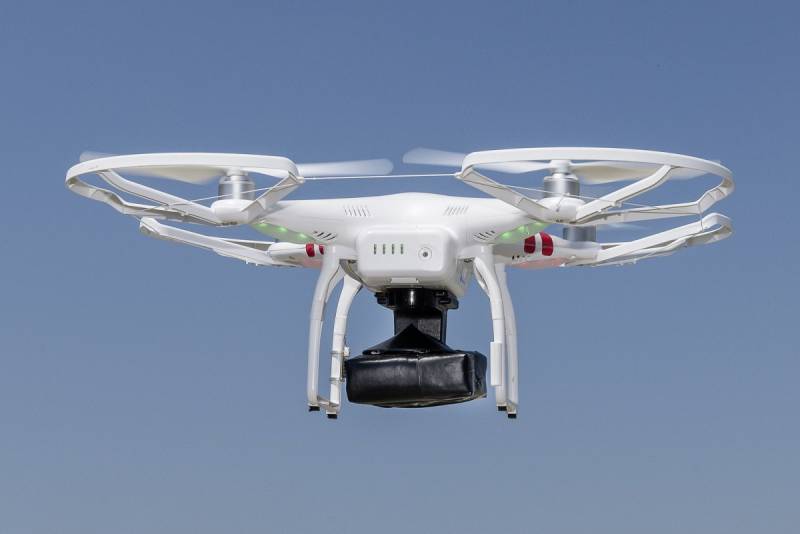
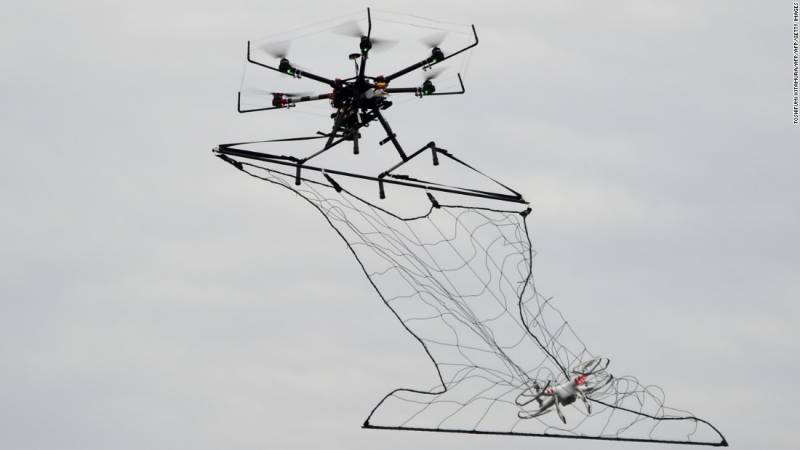
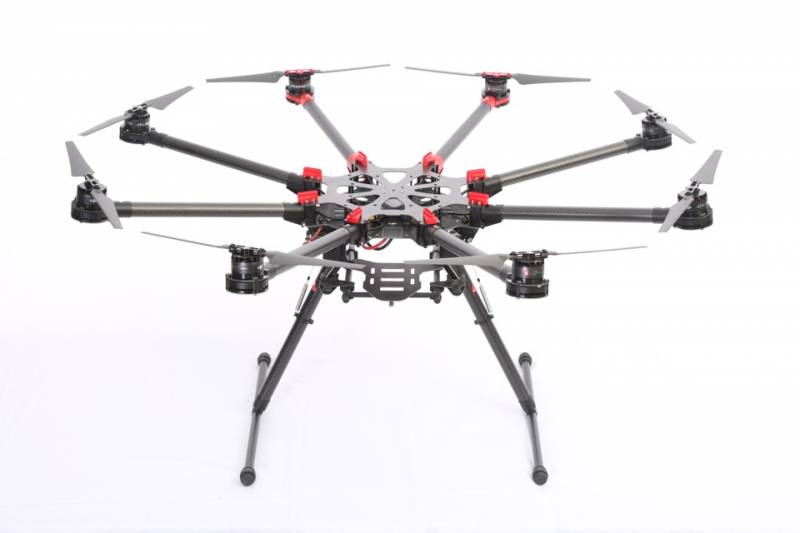
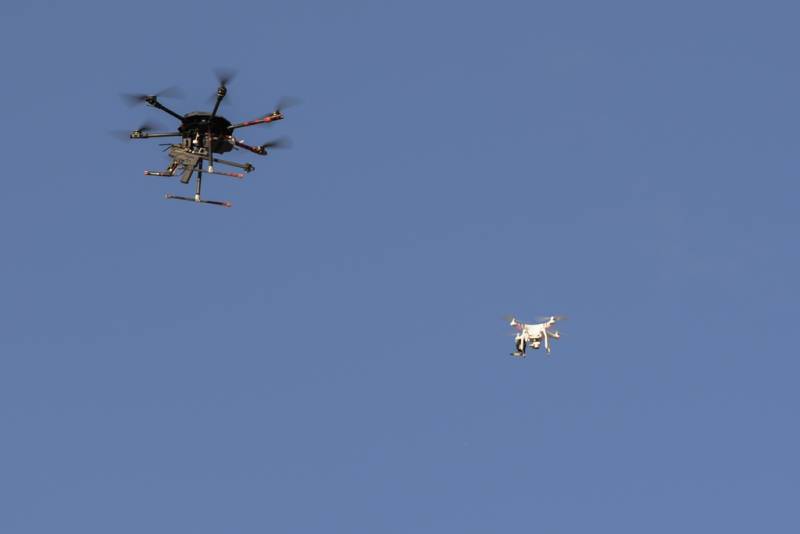
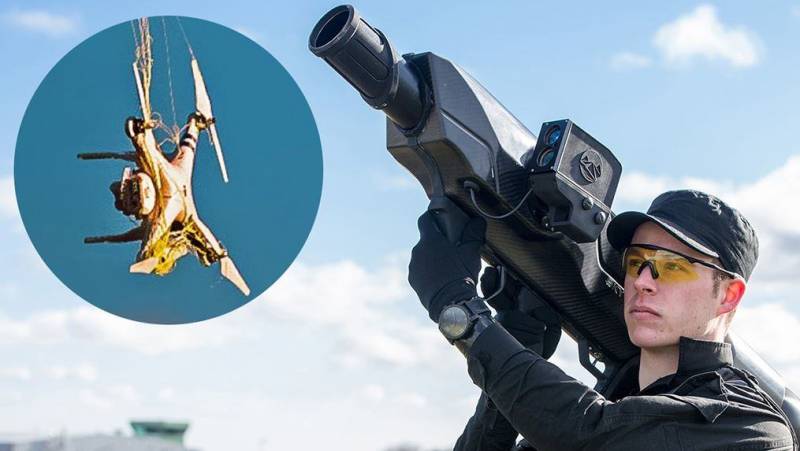
Information